The Bush Stone-Curlew
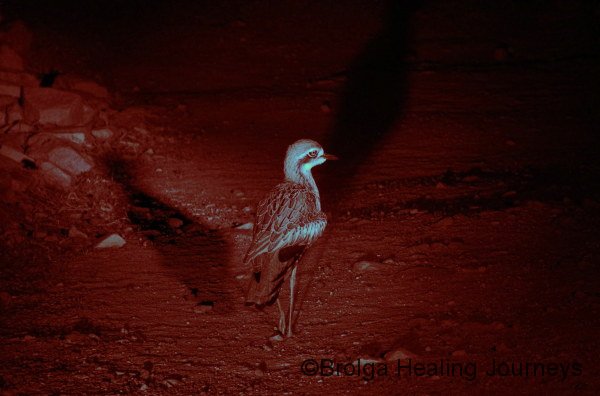
The Bush Stone-Curlew (also known as the Bush Thick-Knee) is a beautiful and unusual Australian bird, with an equally unusual name. This species is unusual in being largely nocturnal and ground-dwelling, and its plumage allows it to blend in thoroughly with the woodland leaf-litter on which it dwells.
The Bush Stone-Curlew is known as a ‘cryptic’ bird – hidden, or unseen – and this refers to its preferred defence of standing perfectly still when a threat is seen, rather than attempting flight. This method works well in avoiding the attention of some predators such as eagles and humans, which look for movement when hunting, but does not work so well with those such as the feral fox which rely upon scent to catch their prey. For this reason, the spread of feral predators such as the fox and the cat has lead to a dramatic reduction in Bush Stone-Curlew numbers, to the point where it is now regarded as threatened. Habitat destruction, particularly in the south-east of Australia, has compounded the problem.
The Bush Stone-Curlew is quite a large bird, standing some 500-580mm tall. It hunts insects and other small creatures at night, picking among the leaf-litter, or wading in the shallows of wetland areas. It has beautiful large eyes suited to its nocturnal habit.
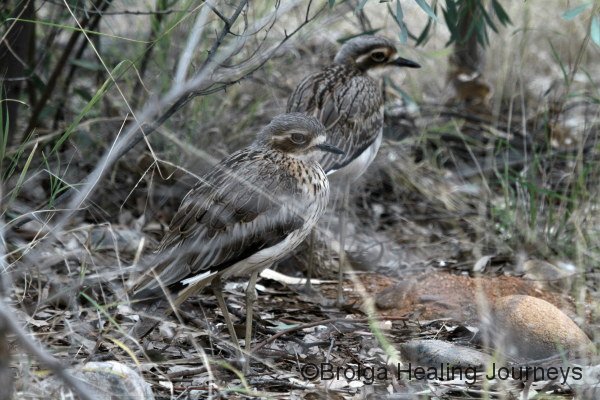

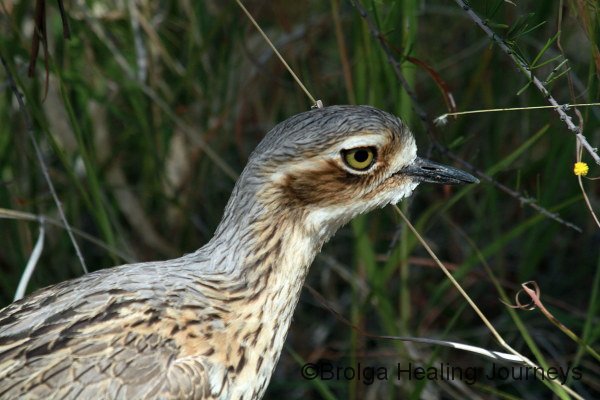
Our first sighting of the bird was at the Jabiru campground in Kakadu National Park, where we walked outside one night and were transfixed at the sight of a large, other-worldly bird standing perfectly still and observing our every move.
The first time we heard the distinctive, mournful nocturnal cry of the bird was at Cocoparra National Park near Griffith in New South Wales. This cry initially worried us, as it sounds eerily like that of a woman or child, and when we first heard it we were fearful that a woman was being attacked nearby. Indeed, the Bush Stone-Curlew is well known to the emergency services in regional areas of Australia; they get many 000 calls from people reporting the sounds of a woman being attacked. The police are required to investigate every such call, even though in certain areas they know that someone has simply reacted to the cry of the local bird!
Bush Stone-Curlews not only spend most of their time on the ground, they also nest on the ground. The Alice Springs Desert Park has several Bush Stone-Curlews in captivity, but a number of wild birds have also chosen the lovely grounds of the Desert Park for their home (anyone who has visited the park would understand their choice – it is a beautiful, safe place for wildlife). Over the past few weeks I have observed a female nesting on the ground. Believe me, had she not been pointed out to me by one of the zookeepers as I wandered around, I would never have seen her hunched low on her nest. I would check each time I visited, and there she would be, sitting on her nest, watching me closely through half-closed eyes. I returned this morning, and she was gone. I wandered around the woodland area for a while and there they were…. two proud new parents and their two gorgeous chicks hidden under some low trees, about 30 metres from their nesting site. Like their parents, Bush Stone-Curlew chicks instinctively choose to freeze in cryptic poses when a threat draws near. This allowed me to get relatively close and grab a couple of photos, but rest assured that I didn’t get close enough to worry or threaten the birds; I can thank the wonders of telephoto lenses for that!
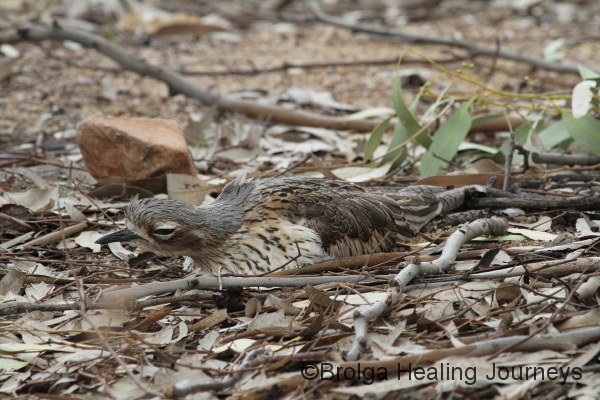

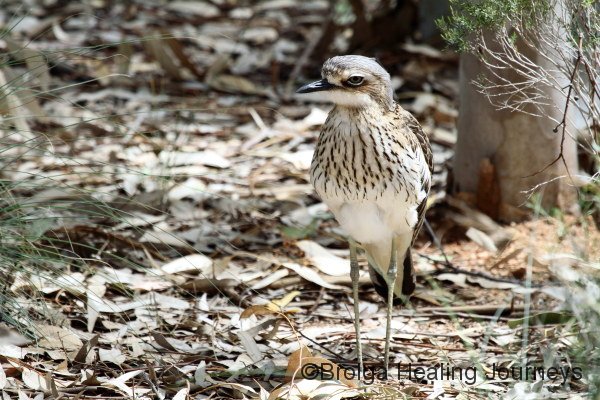
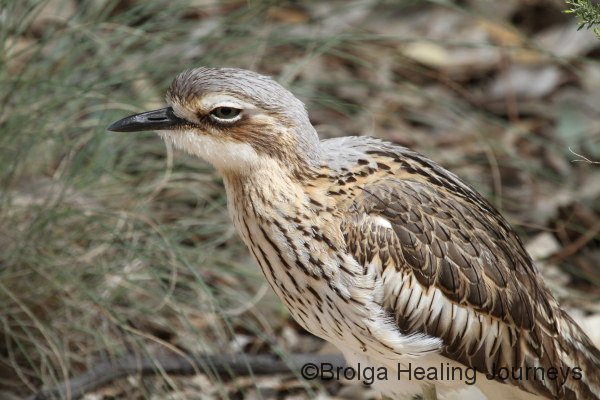
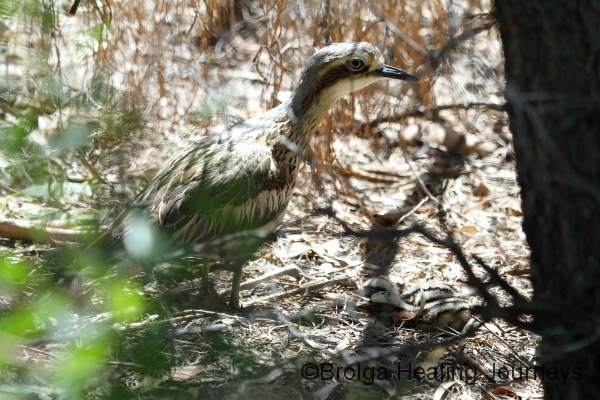
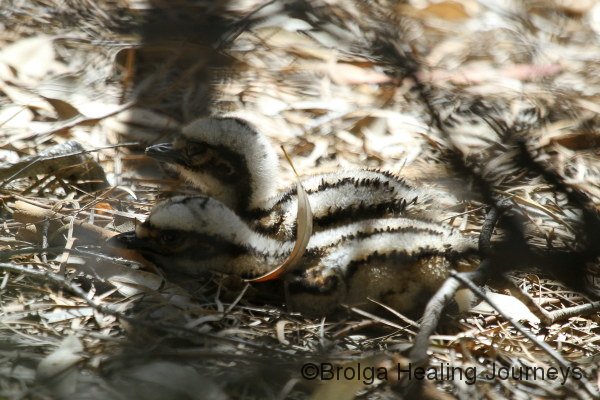
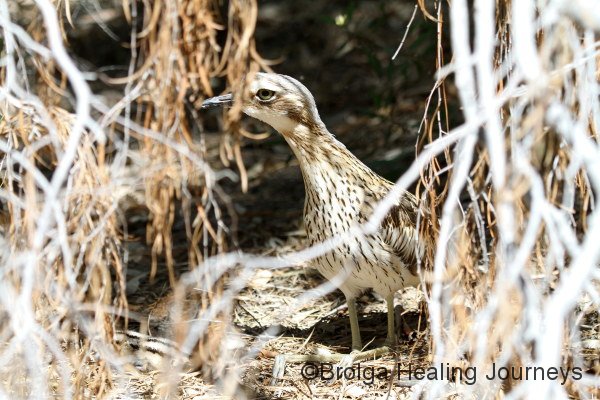
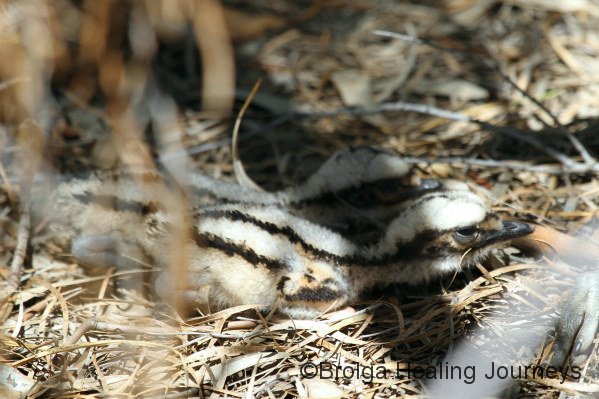
I look forward to watching the chicks grow up over the coming weeks.
Peter
11 September 2010
Well, a week later and the chicks are definitely growing. The Bush Stone-Curlew family has been on the move since I last saw them. Because of their camouflage they took some tracking down, but I found them! Here they are, the youngsters appearing steadier on their tiny legs.
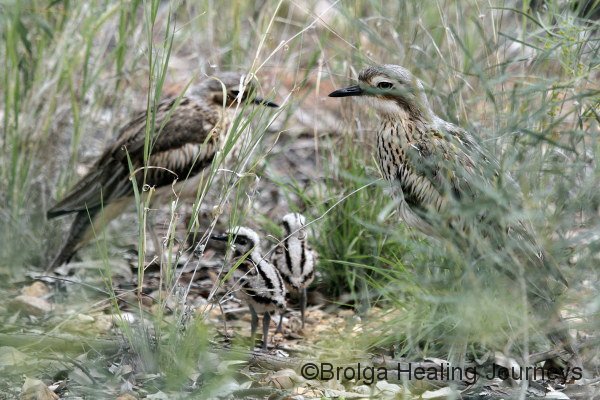
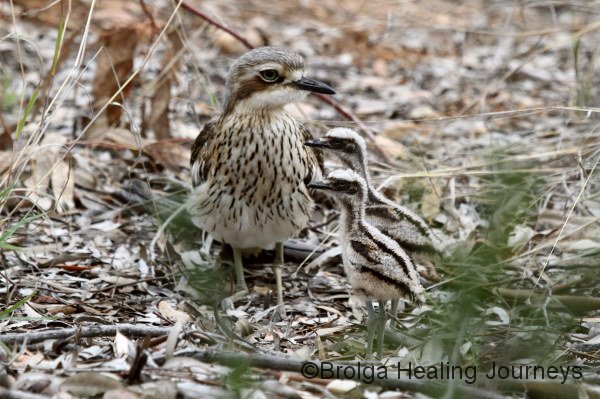




















In Kuranda, the rainforest village near Cairns, at least one of these birds can regularly be seen wandering the streets in the evening
Let’s hope it keeps off the roads! They certainly are a very special sight at night.
Hi, We have a breeding pair near our home. While their calls in the dead of night can, at first, have you sitting bolt upright in bed, we have become accustomed to their blood curdling shrieks and always keep a keen look out for them when coming home at night.
Nice to know they are in northern NSW.
we live in the rural area in Darwin and hear these birds every night, i too thought someone was being attacked when I first heard them, scary!!
Also in Kuranda, a pair of curlews hung around and nested in my backyard. For a week or two they were around with their chicks, three weeks later after a week of disappearing the parents are back but without their chicks I’m guessing cat, dog, another bird or road kill unfortunately. I’m feeling sad
I’m guessing cat, dog, another bird or road kill unfortunately. I’m feeling sad
I have two curlews that live on my property and have taken to coming into the house in the evening. They are not in the least bit frightened but I would prefer they stayed outside…any ideas or comments on such habits by these birds